Earlier this year, business owners told us they were optimistic about using AI in their marketing. While generative AI tools—those that create content based on your prompt—are still in their infancy, it’s worth thinking about how you’ll incorporate them into your long-term operations.
For example, text-to-image generators remix human-made training data to produce original and eye-catching visuals within seconds. We tested six of them using the same prompts, and compared their strengths and weaknesses. Read below to consider which image generator is right for your business.
What you need to know
- By training on billions of images and descriptions, AI image generators create visuals by predicting how the elements from your text prompt are likely to appear.
- As a business owner, generative AI allows you to reduce costs by quickly creating custom visuals without extensive resources—though you’ll still need humans to manage the results.
- Each image generator has strengths and limitations. When creating stock imagery, the realism, perspective, scale, and details of images vary. We found Midjourney produced the most realistic results.
How do AI image generators work?
Since 2022, almost all AI text-to-image generators work using diffusion models, programs that have been trained to recognize patterns through diffusion and reverse diffusion. In a nutshell, an engineer gives the AI a picture and text description, the AI progressively blurs the picture until it’s pure visual static (diffusion), then removes that static until it has recovered the original image (reverse diffusion).
After doing this billions of times, the AI has so much data that it can analyze the elements of an image based on how likely they are to appear next to each other. The AI can then use this data to generate an image from your text prompt.
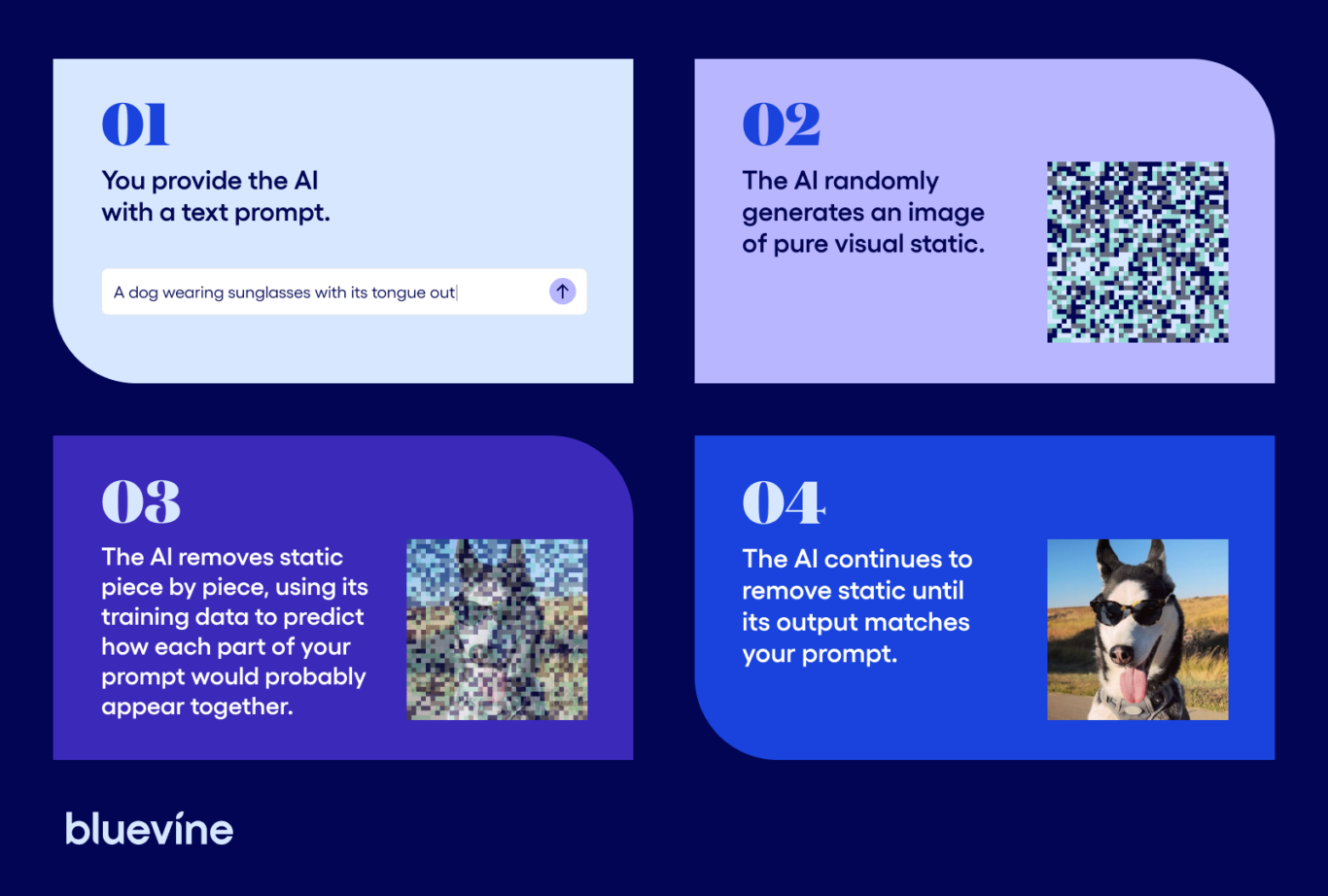
How you can use AI-generated images for your business
Diffusion models allow your team to generate images quickly and with little work. They also don’t require much computing power from you, making them an accessible, scalable tool to:
- Save on photography or design costs while choosing from many options
- Save time on A/B tests, visual tweaks, and design experiments
- Create unique visuals that can’t be found in stock image libraries
- Quickly refine images with adjustments to the prompt
- Personalize images to align with brand identity or target segments
Even with the same prompt, image generators produce different outputs each time. This means they’re highly flexible but also require a human eye to choose between options, refine prompts, or make edits. AI can’t replace your human team, but it can speed up their process.
Comparing different AI image generators
We entered two prompts into six image generators to test how well they could replicate stock imagery. Each tool had strengths and weaknesses, and the accuracy of details like hands, skin, and numbers varied.
Remember that AI tools are constantly changing, sometimes in unpredictable ways. Slight tweaks to your prompt will also result in different outputs. (All images below were generated in September 2024.)
1. DALL·E 3
Pros
- Fast
- Allows you to reference source artists by name
- Mimics the style of stock images well
Cons
- Defaults to WebP format and no longer offers PNG downloads
- Generated images feel stiff
- Outputs only two images per prompt
- Less easy to tweak prompts and settings
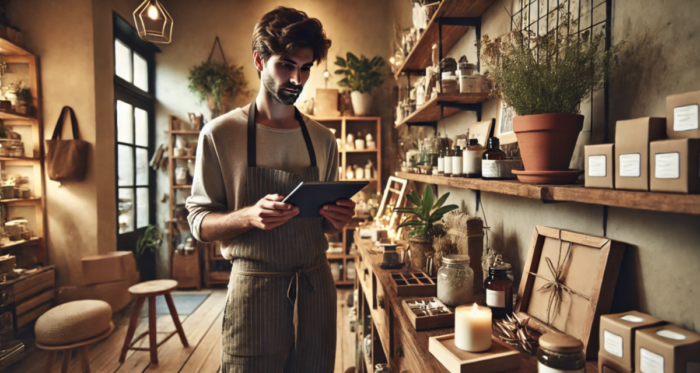

Prompt: Photo of a small business owner taking inventory on a tablet for a lifestyle shop.
OpenAI’s DALL·E produced a unique and consistent look, but that look included airbrushed skin and other textures, saturated colors, and some disproportionate body features. Images mimicked the perspective of stock photos, but incorrect details were apparent.


Prompt: Close-up portrait in landscape orientation of a person’s hand holding a credit card over a payment terminal.
2. Adobe Firefly
Pros
- Fast
- Included in Adobe Creative Cloud
- Downloads in JPG format
- Outputs four images per prompt
- Easy to use
Cons
- Doesn’t recognize the names of source artists
- Generated images feel stiff
- Issues with perspective


Prompt: Photo of a small business owner taking inventory on a tablet for a lifestyle shop.
Adobe Firefly’s images looked realistic at first glance, with consistent lighting and less skin smoothing, but the perspective of background objects was distorted, as were details like hands. The results mimicked stock images, but the humans appear stiff and robotic.


Prompt: Close-up portrait in landscape orientation of a person’s hand holding a credit card over a payment terminal.
3. Midjourney
Pros
- Downloads in JPG format
- Outputs four images per prompt
- Best at interpreting prompts into realistic images
Cons
- You don’t retain copyright over generated images
- Requires a paid membership
- Some issues with details


Prompt: Photo of a small business owner taking inventory on a tablet for a lifestyle shop.
This AI by Midjourney, Inc., created the most realistic and dynamic images of any generator we tried, with especially realistic lighting, textures, and people. Hands, especially, were less distorted, though other objects in close-up—like the payment terminals and cards below—remained uncanny.

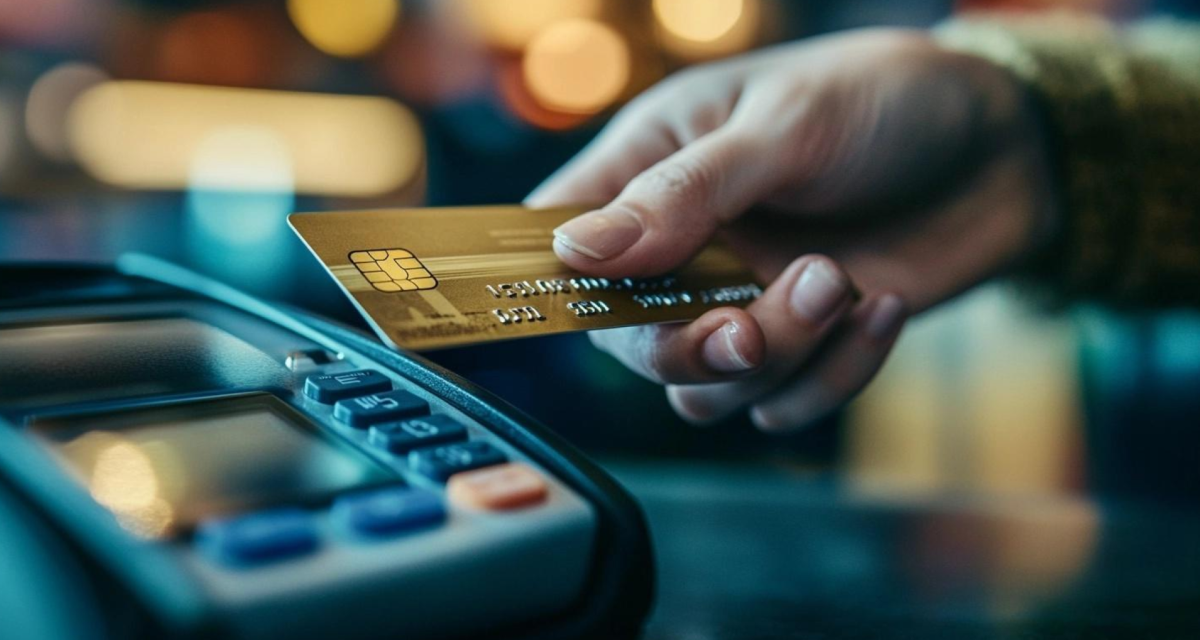
Prompt: Close-up portrait in landscape orientation of a person’s hand holding a credit card over a payment terminal.
4. Freepik Mystic
Pros
- Offers a free tier
- Downloads in JPG format
- Outputs four images per prompt
Cons
- Free tier only allows for compressed JPG downloads
- Noticeable issues with human features
- Less able to interpret prompts
- Generated images feel stiff
- Issues with details


Prompt: Photo of a small business owner taking inventory on a tablet for a lifestyle shop.
Mystic had issues generating eyes and encountered some major problems generating hands and objects. It also interpreted the prompt of “lifestyle shop” as more akin to a stock room.

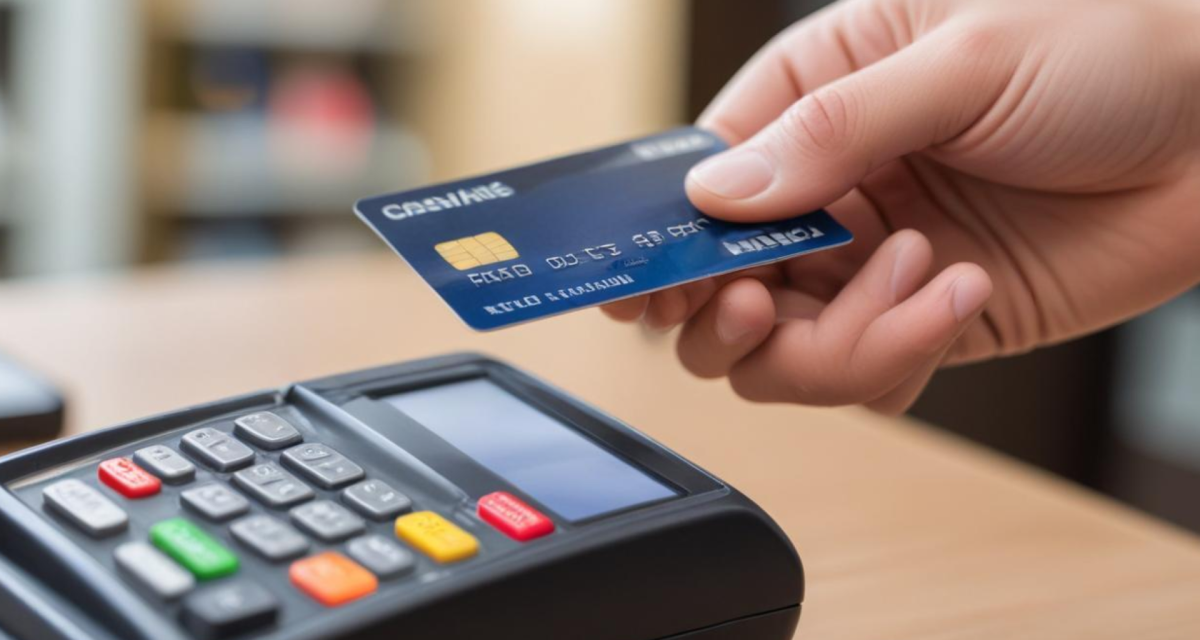
Prompt: Close-up portrait in landscape orientation of a person’s hand holding a credit card over a payment terminal.
5. Leonardo Phoenix
Pros
- Offers a free tier
- Downloads in JPG format
- Outputs four images per prompt
- Easy to use
Cons
- Free tier only allows for compressed JPG downloads
- Generated images feel stiff
- Issues with scale


Prompt: Photo of a small business owner taking inventory on a tablet for a lifestyle shop.
Phoenix produced airbrushed, dreamlike images that, upon first glance, mimicked stock imagery well, but featured distorted fingers and eyes and stiff humans. Phoenix did well at creating the details of close-up objects, but struggled with their scale.


Prompt: Close-up portrait in landscape orientation of a person’s hand holding a credit card over a payment terminal.
6. Haiper
Pros
- Offers a free tier
- Downloads in JPG format
- Outputs four images per prompt
- Has a video option
Cons
- Takes longer, as your prompts are placed in a queue
- Generated images feel stiff
- Issues with details and scale


Prompt: Photo of a small business owner taking inventory on a tablet for a lifestyle shop.
Haiper’s flagship product produced natural colors and contrast, but details like hands were noticeably jumbled. It also struggled with the detail and scale of close-up objects. Haiper released an updated 2.0 model after we ran this test.
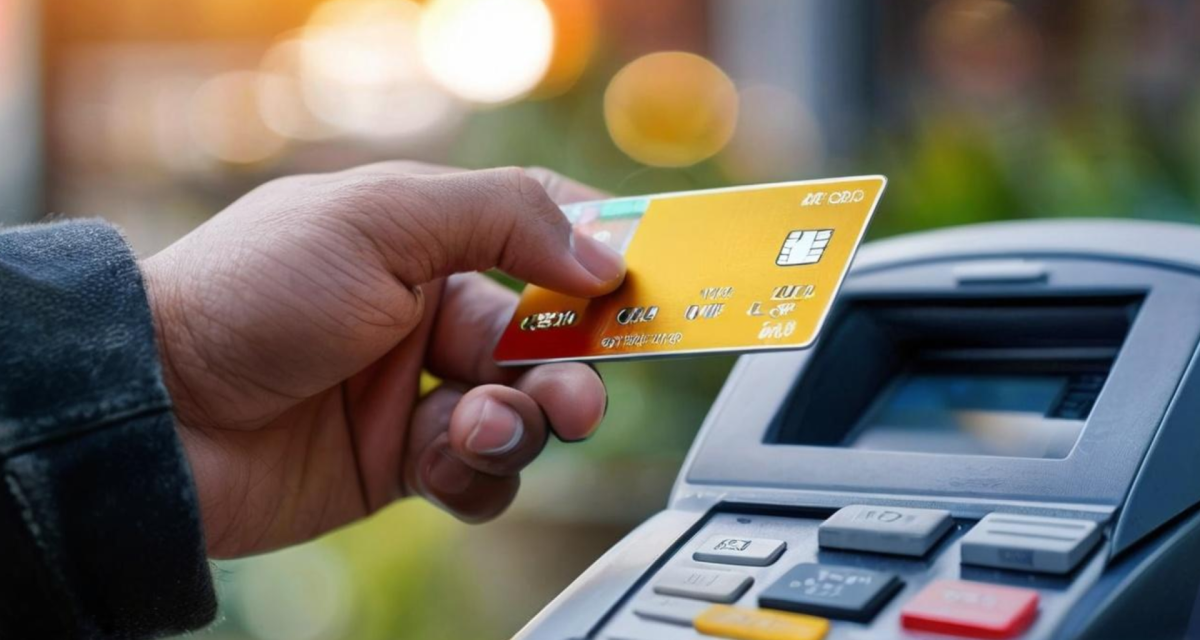
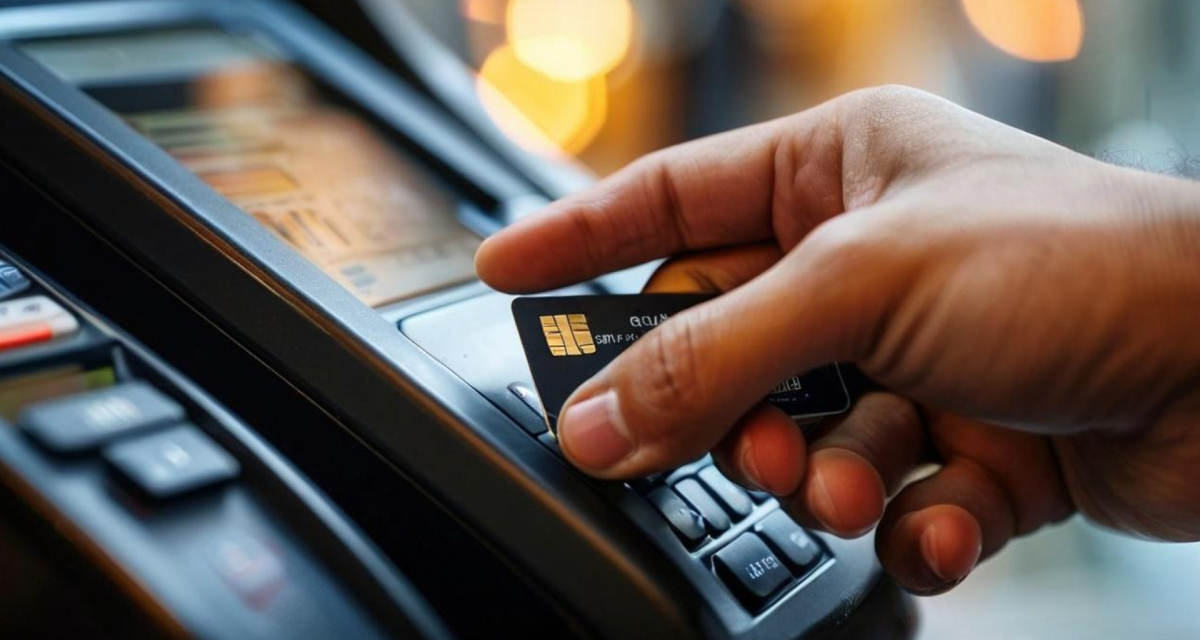
Prompt: Close-up portrait in landscape orientation of a person’s hand holding a credit card over a payment terminal.
How to choose the best AI business photo generator
If you’re trying to decide which GenAI option is the right one for your business needs, you can definitely test them out with prompts of your own. You’ll also want to weigh your options based on budget, photo and video needs, your industry and brand identity, and the volume of images you’ll be generating on a regular basis. If you’re willing to try a paid version, you’ll likely get better quality images. However, if you’re comfortable with slight imperfections and need to move fast to generate AI images for your website, blog, or social media posts, the free versions of these tools may work just fine.
Interested in more digital marketing tips from our team? Download our free guide.
